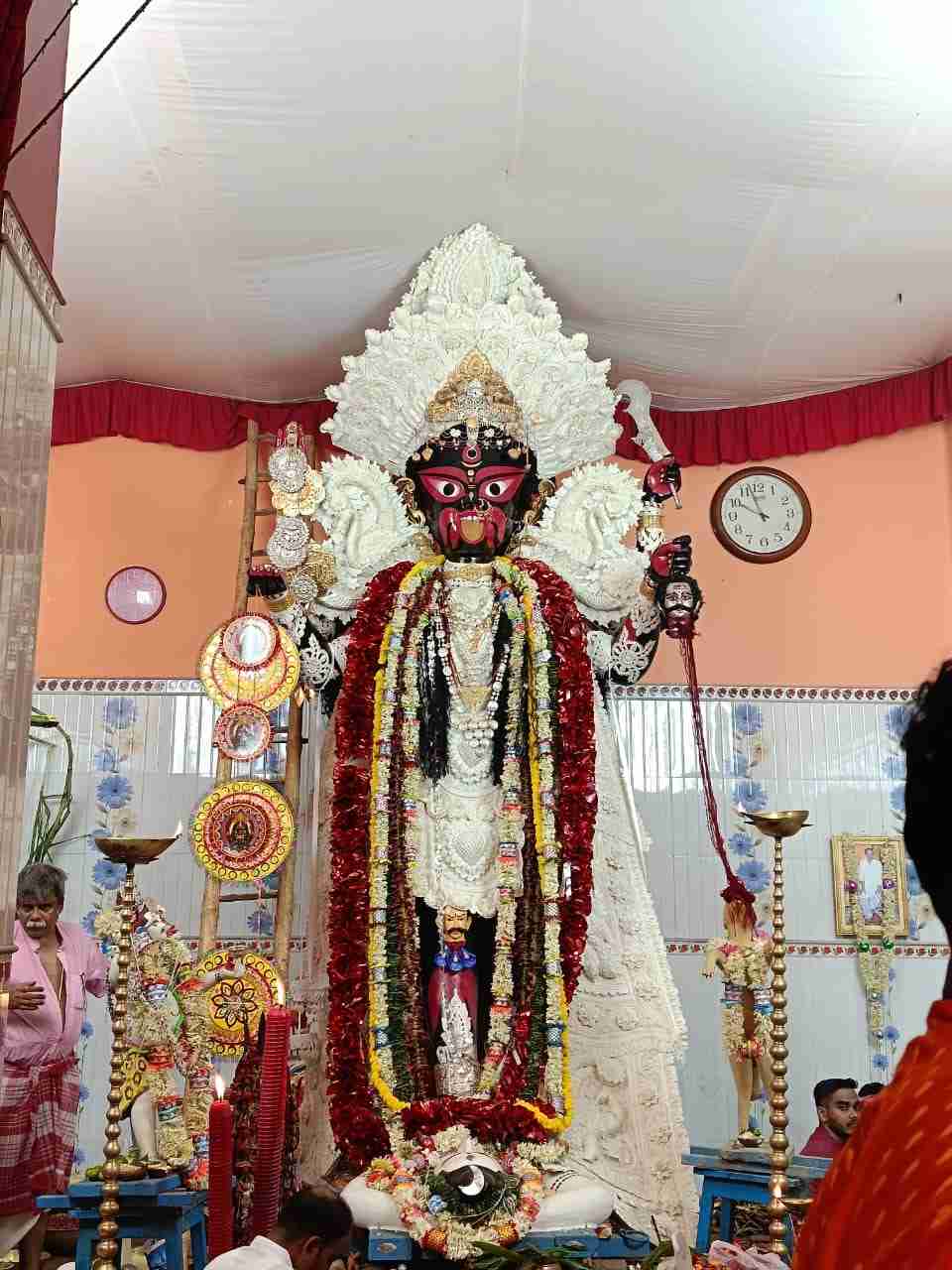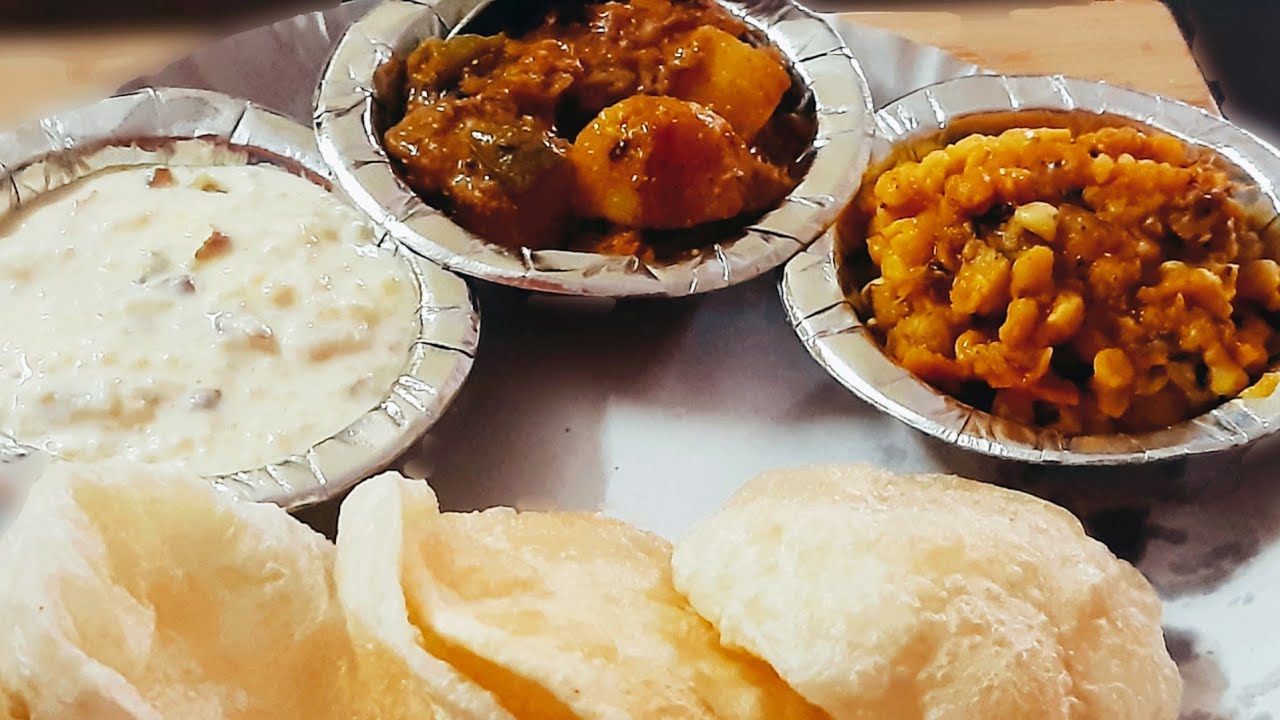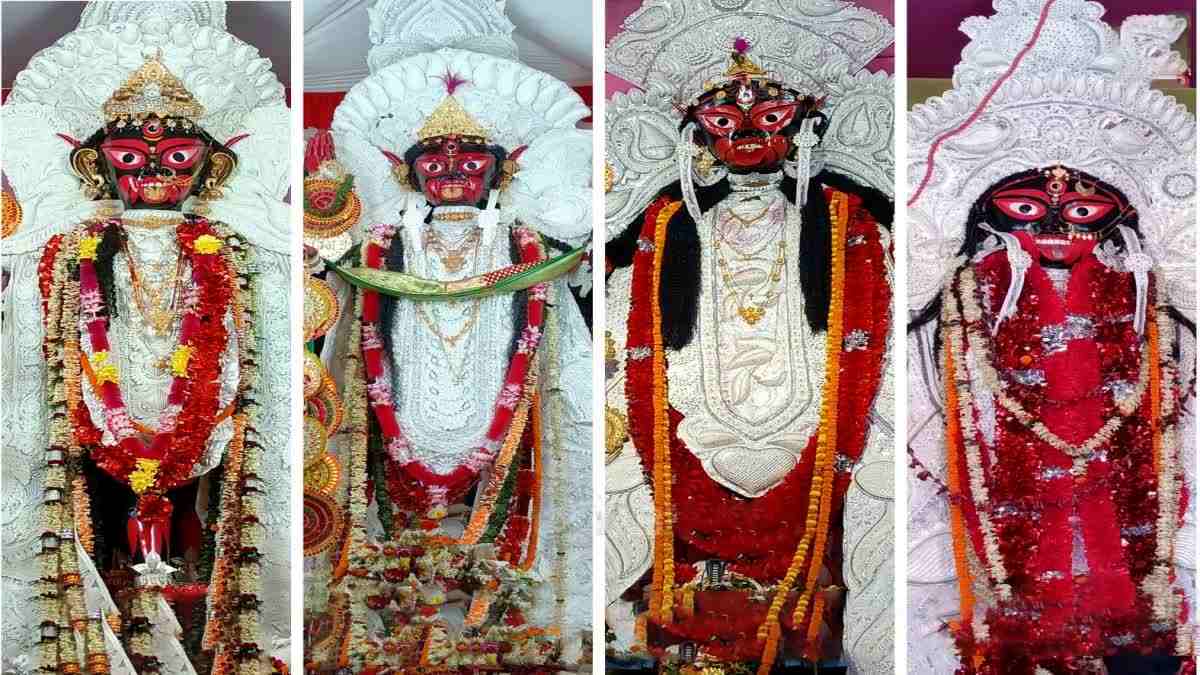If you take a walk through this village, you will witness various forms of Goddess Kali such as Siddheshwari, Burima, Dakat Kali, Khyapama, Anandamayi Maa and many more. The village named Amodpur in West Bengal’s Bardhaman district is more famous by the name of ‘Kaligram’ because various forms of Goddess Kali is worshipped in almost every house of this village!
Some people also call this village “Kali Kshetra” because of so many forms of Kali in one village. In this village, Kali Puja takes the form of a festival. Along with Goddess Kali, Bhairav is also worshipped over here. The tradition has been going on since over 400 years!
Amadpur village is located in Memari No. 1 Block of Purba Bardhaman district. Apart from the community Kali Pujas, Goddess Kali is worhsipped in almost all the house here. According to the 2011 census, the population of Amodpur village is more than five and a half thousand. At present, that number has increased a lot.
Goddess Kali worshipped as four sisters in Bardhaman’s Kaligram
Four Kali sisters live together and are worshipped as “Boro maa”, “Mejo maa”, “Shejo maa” and “Chhoto maa” in Kaligram Amodpur. For over 400 years, more than 100 Kali pujas are being performed in this village. The entire village rejoices in the joy of the festival centred around Kali puja.
When you enter the village, you will first see the 20-foot-tall idol of “Boro maa”. A little further on, there is Mejo maa, who is almost of the same height. Close by are the temples of Shejo maa and Choto maa. Maa Kali is worshipped in every house in this village. In addition to the four sisters, in this village, the goddess is worshipped by different names such as Siddheshwari, Burima, Dakat Kali, Khyapa Maa, Anandamayi Maa and other forms.

Goddess Kali saved merchants from bandits!
There are various stories surrounding Kali puja in Kaligram. The village of Amodpur in Memari was the route for trade and commerce in ancient times. At that time, River Behula used to flow through here, now which has taken the form of a canal. At one time, trade vessels used to pass through here and merchants frequently fell prey to bandits who used to loot them. There was a crematorium on the banks of the Behula River in Amodpur.
A saint who lived in that crematorium, practiced Kali sadhana over there. Gradually, merchants started worshipping Kali Maa in this crematorium praying to her to save them from bandits. It is believed that from then on, they could avert bandit attacks! From then on, they developed faith in the goddess. Maa Kali’s greatness spread in every direction.
Even today, Ganga water is not used in Kali puja in Kaligram. The puja is performed with the water of the Behula river.
Four sisters’ “Bhog” comprises fish, kheer, puri, 13 types of fries and other delicacies
The “Bhog” or offering to the four Kali sisters include fish and other items. Purnachandra Bhattacharya, a member of the Kali puja committee in Kaligram, said, “Goddess Kali is offered 13 types of fried food, khichdi, payesh (kheer), luchi (puri), burnt Shol fish, Rohu fish curry, gourd cooked with fried shrimps, and chutney made with Chalta or Elephant apple.”

Bhattacharya further informed that Money is not collected for Kali Puja funds in Kaligram. If the desires of the heart are fulfilled, the devotees perform puja as per their wishes!
Procession of four sisters before immersion
In the present day, the immersion of Kali idols in Kaligram after Kali Puja is a grand spectacle attracting tourists from far and wide! Purnachandra Bhattacharya said that during the immersion, a procession is taken out with the four Kali sisters with torches at night. After going around the entire village all night, visarjan (immersion) is done in the morning. Only after the immersion of these four sisters, the other Kali idols are immersed. People from the surrounding districts come in large numbers to watch the immersion.


